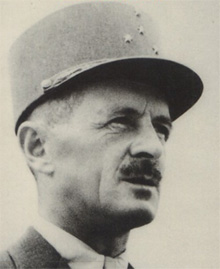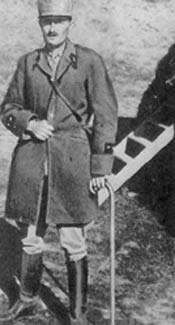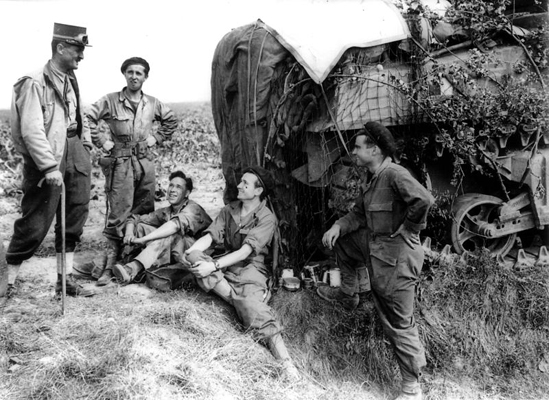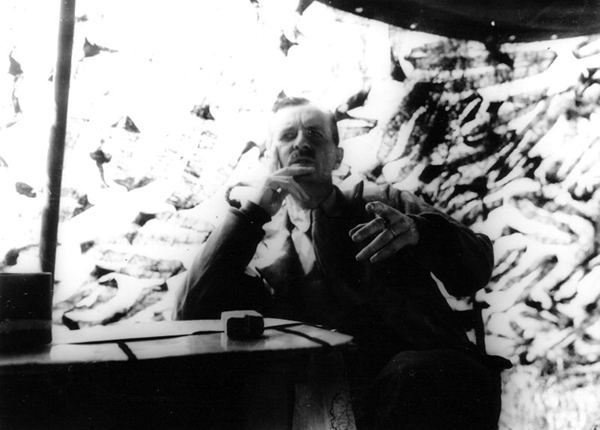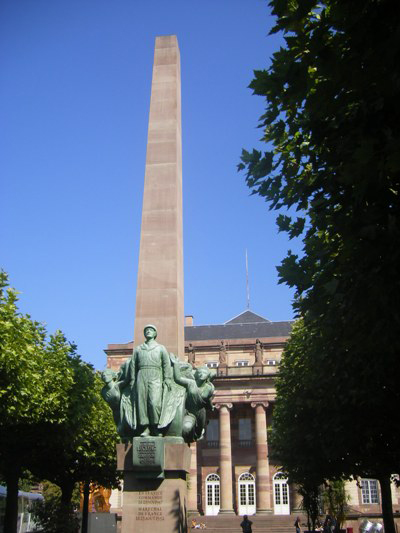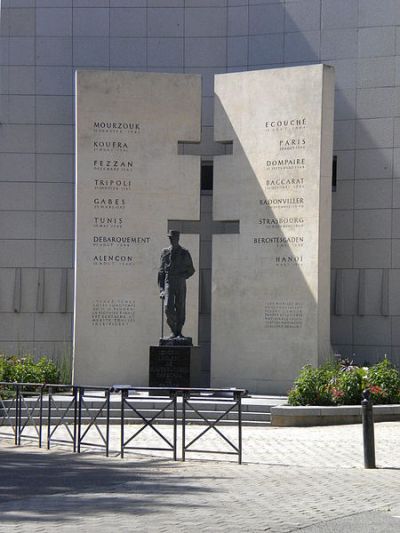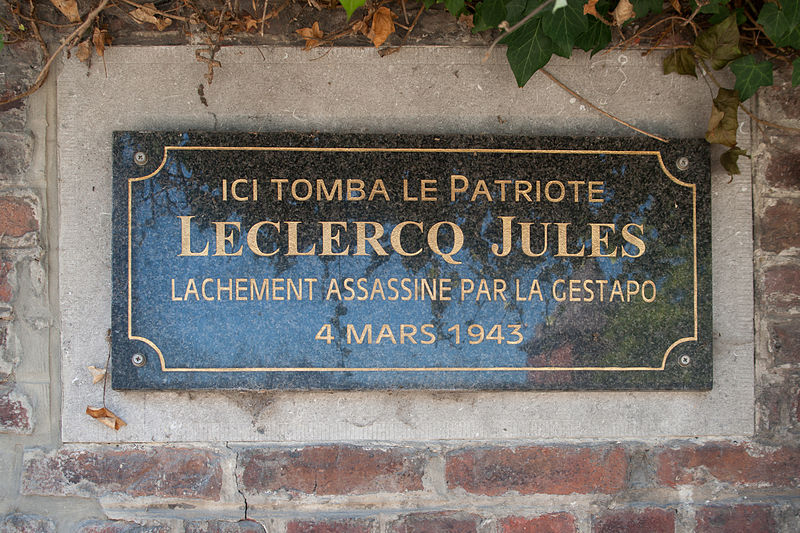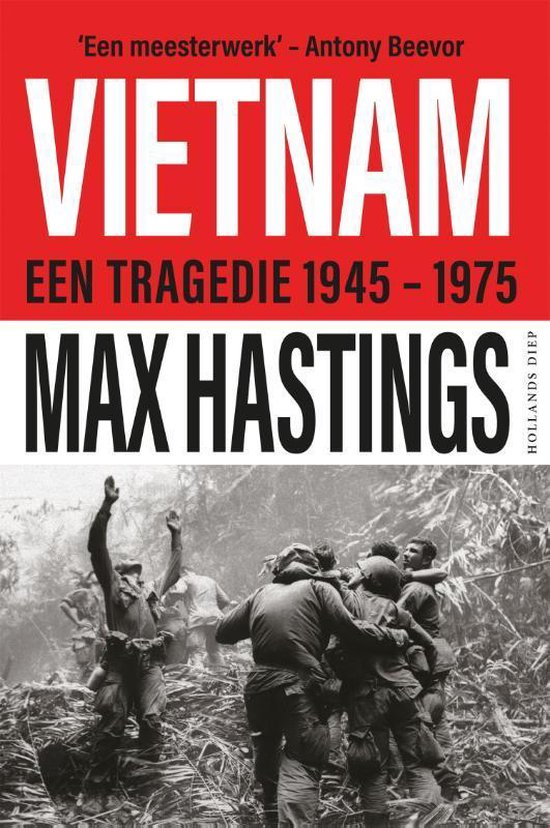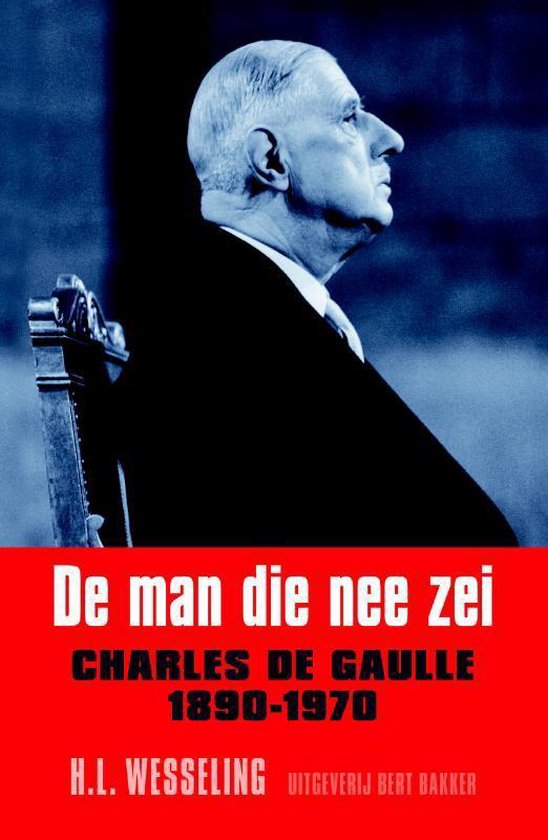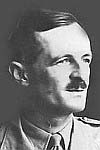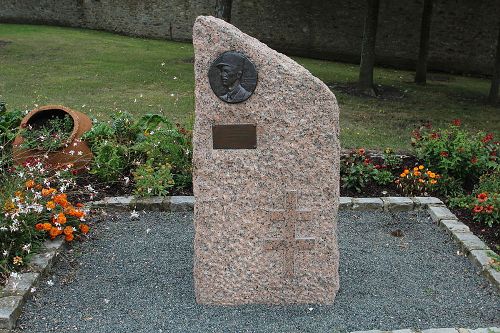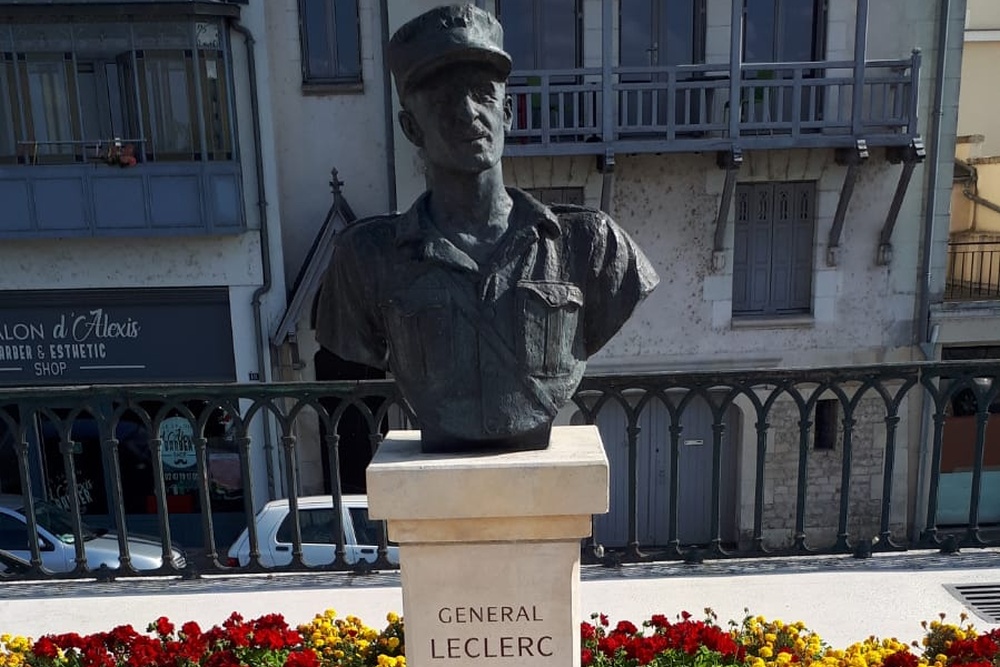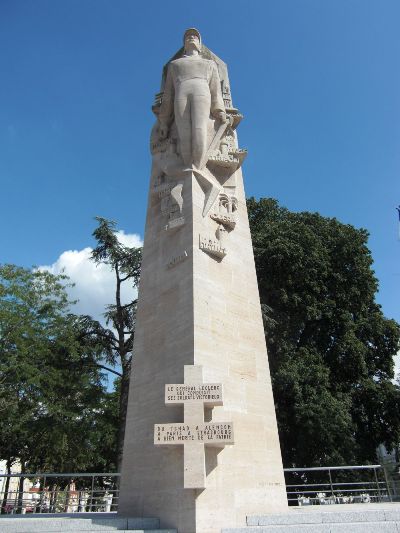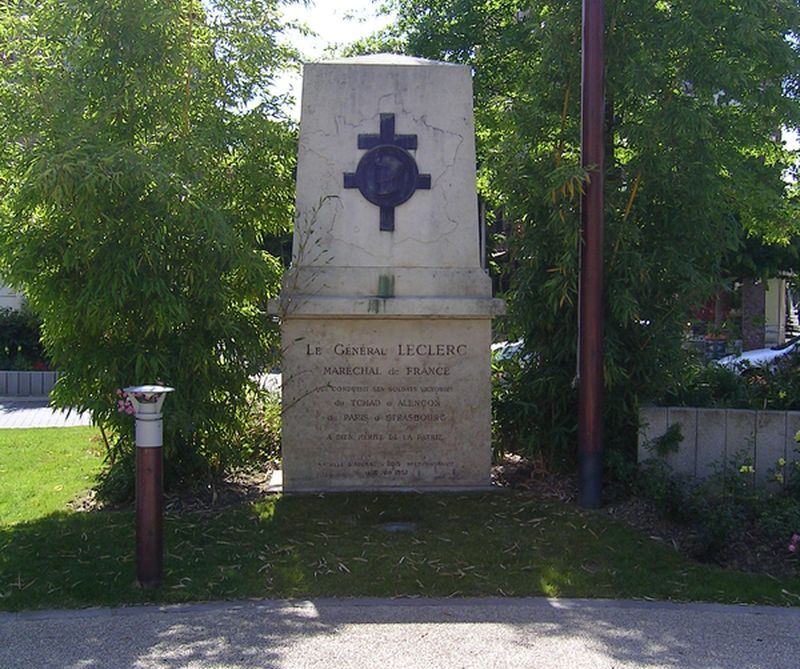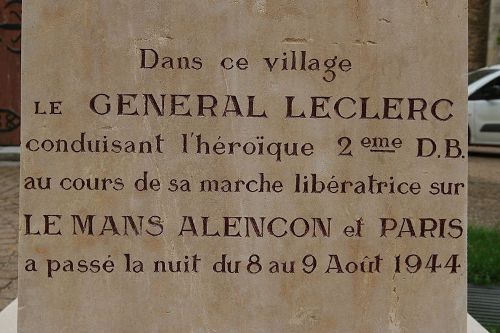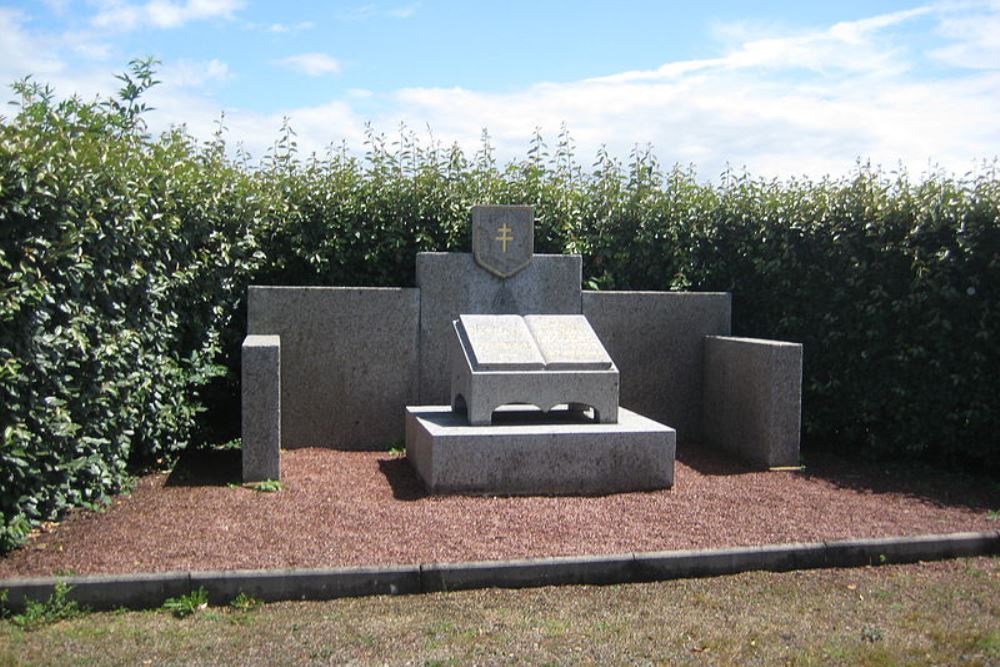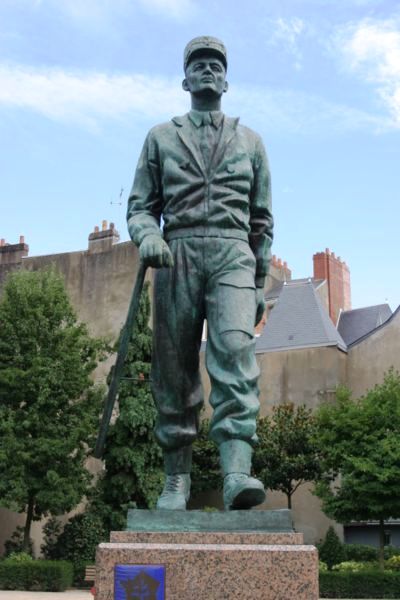Introduction
In May of 1940, Jacques-Philippe Leclerc managed to escape German captivity. He joined the Free French [France Libre] forces of Charles de Gaulle and liberated Paris in August 1944. That made him one of the best known generals in the Second World War.
Youth and prewar years
Philippe François Marie, Comte de (Count of) Hauteclocque was born on 22 November 1902 at Belloy-Saint-Léonard, a village near Amiens in Northern France. He was the fifth of a total of six children of Adrien de Hauteclocque, Comte de Hauteclocque and Marie-Thérèse van der Cruisse de Waziers. He came from an old noble family. Leclerc received a Catholic education and this faith would remain an important factor throughout his life.
Between 1922 and 1924 Philippe attended the Ecole Spéciale Militaire de Saint-Cyr in Bretagne. In 1925 he also studied at the Ecole d’Application de la Cavalerie de Saumur. After this he entered active service in the French army with the rank of sous-lieutenant. On 10 August 1925 he married Thérèse de Gargan; the couple would eventually have six children. On 26 October he was promoted to lieutenant.
At first, de Hauteclocque served in the 5th Régiment de Cuirassiers, stationed in Trier in the Saarland, occupied by the French army. After serving in this unit for a year he was transferred to the 8th Régiment de Spahis Marocains in Morocco (a colonial cavalry-unit), where he fought in the Rif war (1920-1926). During this conflict, the tribes of the Rif mountains, commanded by Mohammed Abdelkrim El Khattabi, tried to establish an independent state, which Spain and France prevented, partly through the use of chemical weapons. In 1929 he was appointed Commander of the 38th Goum, a light infantry company consisting of Moroccan soldiers.
During the period 1931-1932, de Hauteclocque was a teacher at the Saint-Cyr military school. It was here, during a riding lesson that he broke his leg, and was forced to use a walking stick for the rest of his life. After his time as a teacher, he served again for a number of years in Morocco. On 25 December 1934 he was promoted to capitaine. For his actions in North-Africa he was also awarded the Légion d’Honneur.
From 1938 until 1939, de Hauteclocque succesfully trained at the École de Guerre in Paris. In the mid-1930s he became a member of the Action Française, a conservative-nationalistic movement, led by the antisemitic writer Charles Maurras. Presumably, de Hauteclocque did not hold a grudge agains Jews, but he agreed with the other ideas of the political party. He very much detested the Popular Front government that was in power in France from 1936 on, because it consisted of socialists and communists.
Definitielijst
- cavalry
- Originally the designation for mounted troops. During World War 2 the term was used for armoured units. Main tasks are reconnaissance, attack and support of infantry.
- infantry
- Foot soldiers of a given army.
- Jews
- Middle Eastern people with own religion that lived in Palestine. They distinguished themselves by their strong monotheism and the strict observance of the Law and tradition. During World War 2 the Jewish people were ruthlessly persecuted and annihilated by the German Nazis. . An estimated 6,000,000 Jews were exterminated.
- mid
- Military intelligence service.
Early war years
Start of the Second World War
At the beginning of the Second World War, de Hauteclocque was capitaine in the Fourth Infantry Division, stationed near Lille. On the first day of the German offensive called Fall Gelb, the division moved to Belgium for a counterattack against the invading forces. However, the battle went badly: the unit was driven back and surrounded by the Germans around Lille. To escape imprisonment, de Hauteclocque, with the permission of his superior, broke through the German lines. By donning civilian clothes he hoped to escape imprisonment. Nonetheless, on 29 May 1940, de Hauteclocque was interned by the Germans. Because they doubted whether he was a soldier, however, he managed to escape. Again, he went back to fight. He reported to the 2ème Groupement Cuirassé, a combined unit which also included the 10th Motorized Cavalry Brigade of Brigadier Stanislaw Maczec. With this group he undertook a number of counter attacks.
On 15 June Capitaine de Hauteclocque received a headwound during a German air attack near the river Aube in the Champagne region. He was evacuated to a hospital in Tonnerre. When the Germans conquered this area, they took him prisoner again. On 17 June he escaped from German captivity by jumping out of a hospital window. The battle of France had already been settled and the official armistice between France and Germany was concluded on 22 June 1940. However, de Hauteclocque did not surrender. In Paris, he learned of the call by Charles de Gaulle (the leader of Free France) to continue the struggle from England. De Hauteclocque wanted to comply with this and he travelled by bicycle to the south of France. His sister arranged a false identity card for him with the name "Leclerc." That was the first time that he used this name. In Bayonne, at the foot of the Pyrenees, he received a visa for Portugal, but not for Spain. So he travelled back to Perpignan and after acquiring a Spanish visa there, he crossed the French-Spanish border on 13 July.
After crossing the border, de Hauteclocque was arrested by the Spanish customs because he carried too many foreign currencies, but they let him go after interrogation. On 20 July 1940 he embarked fom Lisbon on the SS Hilary (a former British passenger vessel, requisitioned by British Admiralty). On 25 July he reported in London to de Gaulle and joined the forces of the Free France. Their aim was to make sure that France could rejoin the war. Here he changed his name to Jacques Philippe Leclerc in order to protect his family, left behind in France, against retaliation. (In the part of France not occupied by the Germans, a state was established under the leadership of Philippe Pétain; this government stood under strict control of the Germans).
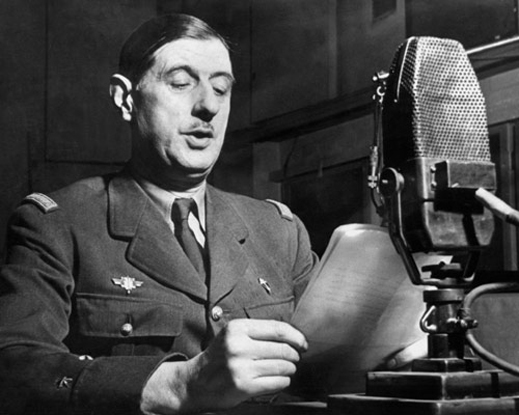
Charles de Gaulle, leader of the Free French, adresses the French people on BBC-radio, 30 October 1941 Source: BBC / Wikipedia
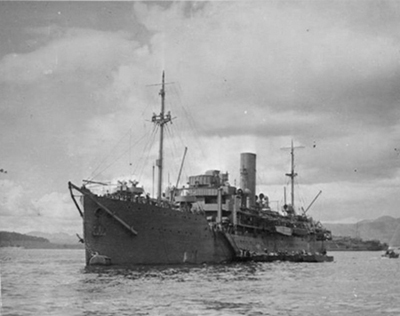
The HMS Hilary during the Second World War. With this ship Leclerc sailed to England to join the Free French. Source: Imperial War Museum.
War in Africa
After meeting de Gaulle, in August 1940 Leclerc, with the rank of squadron commander (chef d'escadrons), was sent to Africa, with a small group of 22 officers. Their task was to induce French Equatorial Africa to join the Free France. That mission proved to be a succes: Cameroon, Chad and French Congo joined de Gaulle. Leclerc was appointed Military Commander of Chad. On 25 November 1940 he was also promoted to colonel. In Chad he mobilized a small force to start a campaign against the troops of the Axis powers. In January 1941, Leclerc’s men marched to the adjacent Italian colony Libya and defeated the troops there. The campaign finished two months later with the capture of the Kufra oasis in Libya. De Gaulle applauded this act because now, France was taking part in the war as a fighting party. Later on 11 October 1941, however the Vichy-regime sentenced Leclerc to death in absentia on 11 October 1941 for treason, after stripping him of his French nationality.
Reportedly, on the second of March 1941, Leclerc and his men swore an oath in Kufra, that they would not lay down their arms before seeing the French colours over the Strasbourg cathedral again. On 10 August, Leclerc was promoted to the temporary rank of géneral de brigade (brigadier general). On 14 April 1942 this rank was confirmed after he was appointed Supreme Commander of the Free French forces in Africa.
Leclerc’s assembled unit consisted of Free French forces, colonial troops and a few British pilots, who battled in outdated aircraft. The ‘colonne Leclerc’ consisted of a mere 3000 men and 350 vehicles. Nevertheless, Leclerc’s unit surprised the Italian defense in South Libya and marched 1500 km through the sweltering and inhospitable Sahara to the north. On 23 January 1943 the unit arrived in Tripoli, recently captured by the 8th Army. Leclerc was placed under the command of Field Marshall Bernard Montgomery and his unit played a significant role in the advance of the British 8th Army in Tunisia.
On the fifth of May 1943, Leclerc was promoted to général de division (major general). After he was supplied with modern American materiel and fresh troops, he transformed his gathered force in the 2ème Divison Blindée (2nd Armoured Division). The unit remained in Temara (Morocco) until April 1944 in order to complete the training. Hereafter, the division was transferred to Great Britain. One of the first actions of Leclerc, on arrival in Yorkshire, was to read a Mass for the French heroine of 500 years earlier, Joan of Arc, who was put to death by the English. Leclerc was very patriotic and, just like Charles de Gaulle, could not stand the fact that Great Britain had grown more powerful in the recent war years, while the role of France remained secondary. He found it very painful that his division began the crossing to England by way of Mers-el-Kebir in Algeria – the same port where the Royal Navy, four years earlier, during operation Catapult had sunk part of the French fleet in order to prevent it from falling in the hands of the Germans.
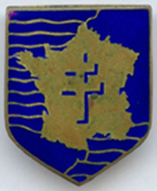
Insignia of the 2e Division Blindée, Source: Insignia of the 2e Division Blindée, the armoured division commanded by Leclerc.
Definitielijst
- Brigade
- Consisted mostly of two or more regiments. Could operate independently or as part of a division. Sometimes they were part of a corps instead of a division. In theory a brigade consisted of 5,000 to 7,000 men.
- Cavalry
- Originally the designation for mounted troops. During World War 2 the term was used for armoured units. Main tasks are reconnaissance, attack and support of infantry.
- Infantry
- Foot soldiers of a given army.
- offensive
- Attack on a smaller or larger scale.
- squadron
- A military unit in the Belgian navy usually six to eight small ships operating together under one command. The smallest military unit in the Dutch air force of about 350 men. In most countries is the designation of a military unit thesize of a company. It is either an independent unit, such as a battery, or part of a bigger Calvary unit. In the air force it is the designation of a unit of aircrafts.
Liberation of Europe
Landing in Normandy
The 2nd armoured Division was added to the American Third Army of Lieutenant General George Patton and landed on the first of August on Utah Beach in Normandy. Leclerc and Patton, allegedly got on well together, presumably because their characters were comparable. Both had great courage and determination. Moreover, they were both known for their excellent command of modern armoured warfare. Ten days after arrival on Utah Beach the division took action for the first time. The unit participated in the encirclement of German troops in Falaise and entered Argentan on 13 August 1944. Leclerc did cause resentment among his superiors by not following corps orders: his advance on a road that was actually intended for the American 5th Armoured Division, which caused much chaos and congestion.
De 2nd armoured Division was ordered to consolidate the position in Argentan and was transferred to V Corps under Major General Gerow, whereas the remainder of the XV Corps advanced farther on. Leclerc did not agree with this and expressed his displeasure to Patton, who wrote in his diary: "General Leclerc of the 2nd French Armoured Division came in, very exited. (He) wrote me a fool letter… in which he said among other things that if he were not allowed to advance to Paris he would resign. I told him in my best French that he was a baby, and I would not have divisional commanders tell me where they would fight, and that anyway I had left him in the most dangerous place on the front. We parted friends". De Gaulle and Leclerc demanded that French troops were granted the honour of liberating Paris, but this was out of the question for the time being. After this, Leclerc started to show recalcitrant behaviour. When Major General Gerow ordered him on 17 August to capture the town of Trun, Leclerc initially ignored him. It seemed that he would even refuse to obey this order, and Gerow had to exercise the necessary pressure before Leclerc took action.
Liberation of Paris
On 20 August, when the Allied forces drew near Paris, the French resistance in Paris (Forces Françaises de l’Intérieur, FFI) revolted against the German troops, stationed in the city. De Gaulle insisted on a rapid liberation of the French capital by the Allies. The leader of the Free French threatened to send Leclerc to Paris himself. On the 21st of August the division in Argentan was relieved by the British 11th Armoured Division. However, no orders were given yet that Leclerc was allowed to march on to Paris. The French even made plans to advance to the city without permission of the Allied Supreme Command. Already, the troops had stolen fuel from the Americans to prevent possible supply problems if such a scenario were to become reality. Leclerc also sent out unauthorized reconnaissance patrols.
On 22 August the FFI took up the offensive again and de Gaulle again pressed for action. Eventually the liberation of Paris by the French 2nd Armoured Division was authorized by the British and Americans, mainly because the city had a greater symbolic than strategic value. On 22 August, Leclerc received orders from Lieutenant General Omar Bradley, commander of the 12th Army Group. The order was: "OK, you won. They decided to let you go to Paris". On 24 August the troops of the 2nd armoured Division reached Paris.
On 25 August, Leclerc himself arrived in the city. Here, he accepted the surrender of the German garrison commander Generalleutnant Dietrich von Choltitz, who ignored Hitlers orders to destroy Paris and instead ordered the German garrison to lay down its arms in order to prevent protracted streetfighting. In spite of that, the fighting for and the liberation of Paris took the lives of around 2000 Paris civilians, around 1000 members of the Resistance, 97 men of the 2nd armoured Division and about 3200 Germans.
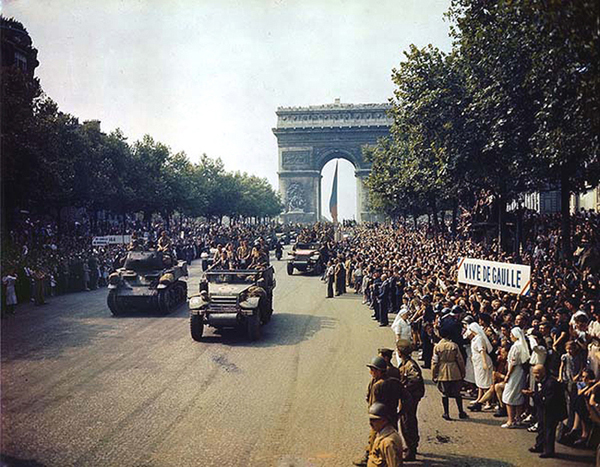
Armoured cars of Leclerc’s 2e Division Blindée drive over the Champs Elysees during the triumphant entry of Charles de Gaulle in Paris. Source: Library of Congress.
Definitielijst
- offensive
- Attack on a smaller or larger scale.
- resistance
- Resistance against the enemy. Often also with armed resources.
End of the war
On 26 August 1944, Charles de Gaulle made a triumphant entry in Paris. After the liberation he kept Leclerc’s division in the French capital for the time being, to nip in the bud possible problems with the Resistance. De Gaulle was not sure whether the French Resistance would support him, mainly because the communists were strongly represented in it. Leclerc made use of this brief break in the battle to visit his wife and children who were still in France. Henri and Hubert, his two eldest sons, entered service in their father’s unit.
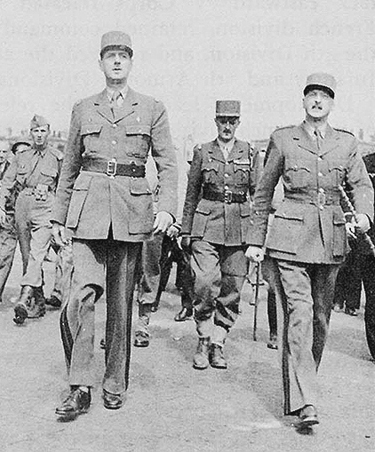
Charles de Gaulle (left) in Paris, accompanied by generals Koenig (right) and Leclerc (centre). Source: U.S. Army Center of Military History
When it became clear that the French Resistance supported de Gaulle en masse, the division was sent back to the front. From 12 until 16 September the division was in combat with the 112th Panzer Brigade. In this battle, Leclerc managed to win, through a number of tactical maneuvers and a good use of air support, for which he earned much respect from the Americans. Next, the 2nd armoured Division liberated Strasbourg on 25 November 1944. The solemn oath, previously sworn by Leclerc had thus been fulfilled. The advance of the 2nd armoured Division did not halt and eventually ended on 4 May 1945 at Berchtesgaden, near Obersalzberg, where Adolf Hiltler’s country retreat was located. After the war, the unit would even become discredited, due to the fact that on 8 May 1945, they executed twelve prisoners – French members of the Waffen-SS - without trial in the small town of Karlstein, in the vicinity of Bad Reichenhall. At the time, however, the authorities did not take this too seriously and Leclerc was not even rebuked for it. On 25 May 1945 he was promoted to géneral de corps d’armée.
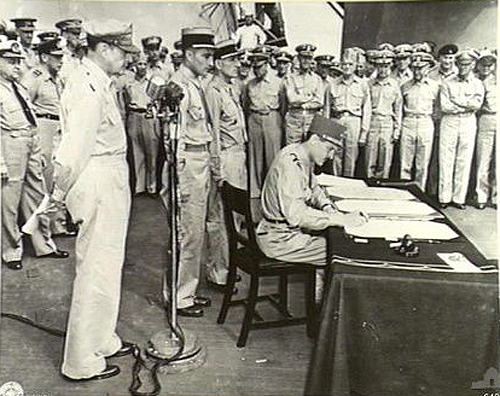
On board the USS Missouri Leclerc signs the Japanese surrender in Tokyo Bay. Source: Australian War Memorial
Definitielijst
- Brigade
- Consisted mostly of two or more regiments. Could operate independently or as part of a division. Sometimes they were part of a corps instead of a division. In theory a brigade consisted of 5,000 to 7,000 men.
- Resistance
- Resistance against the enemy. Often also with armed resources.
- Waffen-SS
- Name of Military section of the SS.
After the war
Postwar military career
After the end of the war in Europe,
In October 1945, Leclerc de Hauteclocque was appointed Commander of the French Forces in Indochina. Around that time the communist Vietminh, led by Ho Chi Minh, began to fight for an independent Vietnam. Initially, Leclerc indicated that they already won the conflict in Vietnam. He did not have a very high opinion of Vo Nguyên Giáp, the unofficial Minister of Defence of the Vietminh. Leclerc de Hauteclocque managed to relieve the besieged Saigon. Soon however, he came to a different understanding. Due to the strong nationalistic mood, the French position in Indochina became untenable in his view and he therefore recommended negotiating with the Vietminh in order to reach a compromise. This opinion, however, was not shared by the French authorities. This and the fact that he could not get along with the High Commissioner of Indochina, Georges Thierry d’Argenlieu, made him request a transfer. He was then appointed Inspector General of the French Forces in North-Africa. On 14 July 1946, Leclerc de Hauteclocque was also promoted to géneral d’armée. The war in Indochina would eventually develop into one of the most lengthy conflicts of the 20th century, in which the French and later on the Americans would lose thousands of soldiers. Henri, one of Leclerc’s sons, would be killed in this area in 1952.
Géneral d'Armée Leclerc de Hauteclocque himself met a tragic end on 28 November 1947, in a plane crash in Algeria. Caught in a sandstorm, his plane, a B-25 Mitchell, crashed in the vicinity of Colomb-Bechar. In the accident, all occupants were killed. His death shocked France. Leclerc de Hauteclocque was considered one of the most important French generals of the Second World War, because he was one of those who has given the army prestige again. During the advance in Western Europe, Leclerc had been the highest ranking officer within the ranks of the Allied armies. Leclerc de Hauteclocque received a state funeral and was interred in the Crypte des Invalides in Paris. On 23 August 1952, he was appointed posthumously Maréchal de France (Marshal of France).
Many monuments in France are dedicated to Leclerc de Hauteclocque, such as the Memorial Géneral Leclerc in Strasbourg and the Farewell Memorial in Fontainebleau commemorating Leclerc’s adieux to the 2nd armoured Division. Streets and squares in many French towns bear his name. Even a tank is named after him, the AMX-56 Leclerc, a combat vehicle developed in the eighties, and still operational in the French army.
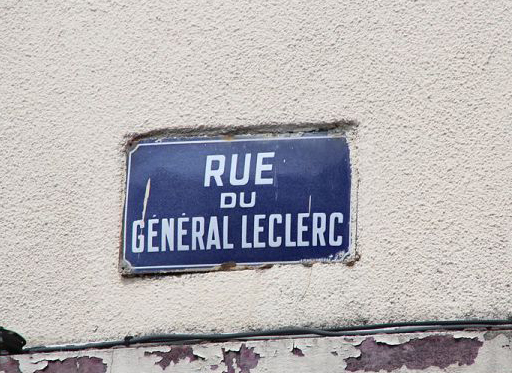
Many streets in France are named after the French military hero. Here in Brétigny-sur-Orge, near Paris. Source: Wikimedia Commons.
Definitielijst
- battleship
- Heavily armoured warship with very heavy artillery.
- capitulation
- Agreement between fighting parties concerning the surrender of a country or an army.
- invasion
- Armed incursion.
- Marshal
- Highest military rank, Army commander.
- Nagasaki
- Japanese city on which the United States dropped the second atomic bomb on 9 August 1945.
Information
- Article by:
- Wesley Dankers
- Article by:
- Cor Korpel
- Published on:
- 08-09-2020
- Last edit on:
- 12-10-2023
- Feedback?
- Send it!
